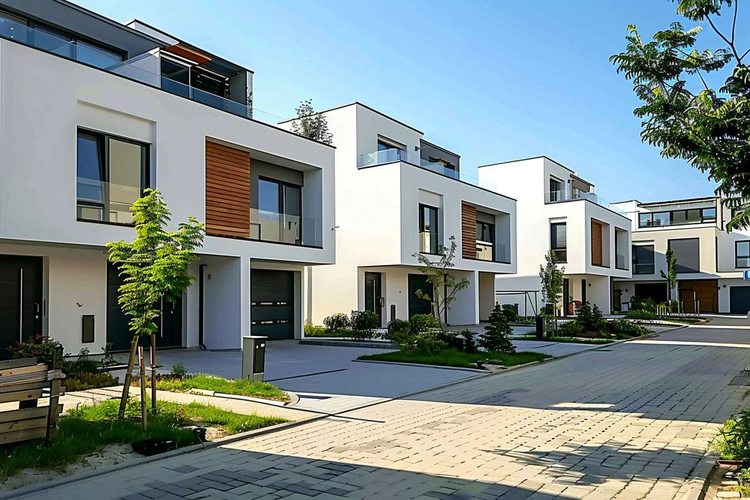Modular Plant Design: Revolutionizing Industrial Flexibility
Modular plant design is reshaping the industrial landscape, offering unprecedented flexibility and efficiency. This innovative approach to facility construction and operation allows businesses to adapt swiftly to market demands, reduce costs, and minimize environmental impact. As industries face increasing pressure to innovate and optimize, modular plants emerge as a game-changing solution for forward-thinking companies.

Historical Context and Industry Developments
Modular design principles have roots in various industries, including construction and automotive manufacturing. However, their application to industrial plant design represents a relatively recent development. The shift towards modular plants began in the early 2000s, as companies sought ways to reduce construction time and costs while improving operational flexibility.
Early adopters of modular plant design were primarily in the chemical and pharmaceutical industries, where the ability to quickly scale production or modify processes is crucial. These sectors recognized the potential of modular designs to accelerate time-to-market for new products and respond more effectively to fluctuating demand.
Key Benefits of Modular Plant Design
Modular plant design offers numerous advantages over traditional, fixed industrial facilities. One of the most significant benefits is the reduction in construction time and costs. Pre-fabricated modules can be manufactured off-site while site preparation is underway, allowing for parallel processes that dramatically shorten project timelines.
Flexibility is another crucial advantage of modular plants. As market demands shift or new technologies emerge, companies can easily reconfigure their facilities by adding, removing, or modifying modules. This adaptability ensures that industrial operations remain efficient and relevant in rapidly changing business environments.
Challenges and Considerations
While the benefits of modular plant design are substantial, implementation is not without challenges. One of the primary hurdles is the initial investment required. Designing and manufacturing standardized modules can be more expensive upfront compared to traditional construction methods. However, the long-term cost savings and operational benefits often outweigh these initial expenses.
Another consideration is the need for careful planning and coordination. Modular plant design requires a high degree of standardization and precision, as modules must fit together seamlessly. This necessitates close collaboration between designers, engineers, and manufacturers throughout the planning and construction process.
Industry Applications and Case Studies
The versatility of modular plant design has led to its adoption across various sectors. In the pharmaceutical industry, modular facilities have enabled companies to rapidly scale production of vaccines and other critical medications in response to global health crises. One notable example is the construction of a modular vaccine production facility in just six months, a process that would typically take years using traditional methods.
The chemical industry has also embraced modular plant design, particularly for pilot plants and small-scale production facilities. These modular units allow companies to test new processes or products with minimal risk and investment, accelerating innovation cycles and reducing time-to-market.
Future Trends and Innovations
As technology continues to advance, the potential of modular plant design is expanding. The integration of smart sensors and Internet of Things (IoT) devices into modular units is enhancing real-time monitoring and predictive maintenance capabilities. This convergence of modular design and digital technologies is paving the way for truly intelligent, self-optimizing industrial facilities.
Sustainability is another area where modular plant design is making significant strides. The ability to easily upgrade or replace modules allows companies to incorporate the latest energy-efficient technologies and reduce their environmental footprint. Additionally, the reduced construction waste and improved resource utilization associated with modular design align well with growing corporate sustainability initiatives.
Practical Insights for Implementing Modular Plant Design
• Start small: Begin with pilot projects or specific production lines to test the concept and gain experience.
• Standardize where possible: Develop a set of standardized modules that can be used across multiple projects.
• Invest in planning: Thorough upfront planning is crucial for successful modular plant implementation.
• Consider lifecycle costs: Evaluate the long-term benefits and cost savings when assessing the initial investment.
• Foster collaboration: Encourage close cooperation between design, engineering, and manufacturing teams.
• Prioritize flexibility: Design modules with future adaptability in mind to maximize long-term value.
In conclusion, modular plant design represents a paradigm shift in industrial operations, offering unparalleled flexibility, efficiency, and scalability. As businesses continue to face pressure to innovate and adapt, the adoption of modular design principles is likely to accelerate across industries. By embracing this approach, companies can position themselves to thrive in an increasingly dynamic and competitive global marketplace.





